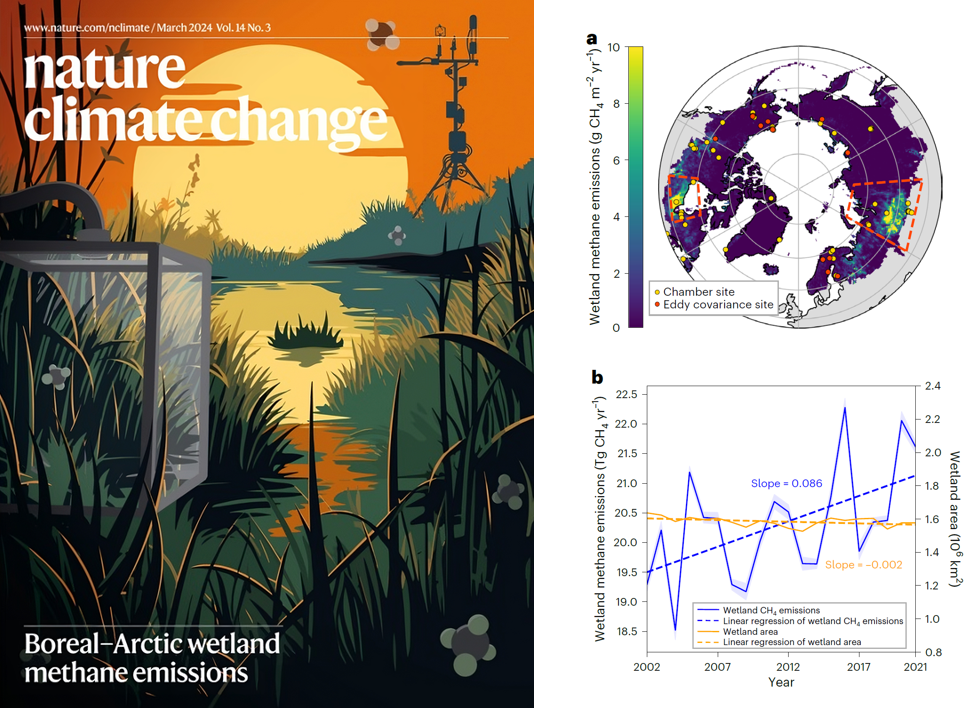Wetland Carbon Cycle
We investigate wetland CO2 and CH4 dynamics at site, regional, and global scales.
Wetlands are the largest natural source of methane (CH4), the second most important greenhouse gas, contributing approximately 20-30% of global emission-related radiative forcing. Wetlands can also be a major sink of carbon dioxide (CO2). However, our understanding of the underlying biogeochemical processes affecting wetland greenhouse gas dynamics remains limited. This knowledge gap leaves the net climatic impact of wetlands and their potential as nature-based solutions underexplored. Therefore, I integrate field measurements, satellite observations, machine learning, causal inference, and biogeochemical models to quantify inland and coastal wetland CH4 and CO2 fluxes from regional to global scales. I also investigate how these fluxes respond to climate dynamics and human activities (e.g., restoration and management), aiming to improve our predictive understanding of wetland ecosystems and their role in nature-based solutions.

Related publications:
2025
- Hysteretic temperature sensitivity in wetland CH4 emission modelingAgricultural and Forest Meteorology, 2025
- Unraveling the depth-dependent causal dynamics of methanogenesis and methanotrophy in a high-latitude fen peatlandEnvironmental Research Letters, 2025
- Advancements and opportunities to improve bottom–up estimates of global wetland methane emissionsEnvironmental Research Letters, 2025
- Development of a Model Framework for Terrestrial Carbon Flux Prediction: the Regional Carbon and Climate Analytics Tool (RCCAT) Applied to Non-tidal Wetlands (in discussion)Geoscientific Model Development, 2025
2024
- Critical needs to close monitoring gaps in pan-tropical wetland CH4 emissionsEnvironmental Research Letters, 2024
- Boreal–Arctic wetland methane emissions modulated by warming and vegetation activityNature Climate Change, 2024
2023
- Upscaling wetland methane emissions from the FLUXNET-CH4 eddy covariance network (UpCH4 v1. 0): Model development, network assessment, and budget comparisonAGU Advances, 2023
2022
- Causality guided machine learning model on wetland CH4 emissions across global wetlandsAgricultural and Forest Meteorology, 2022